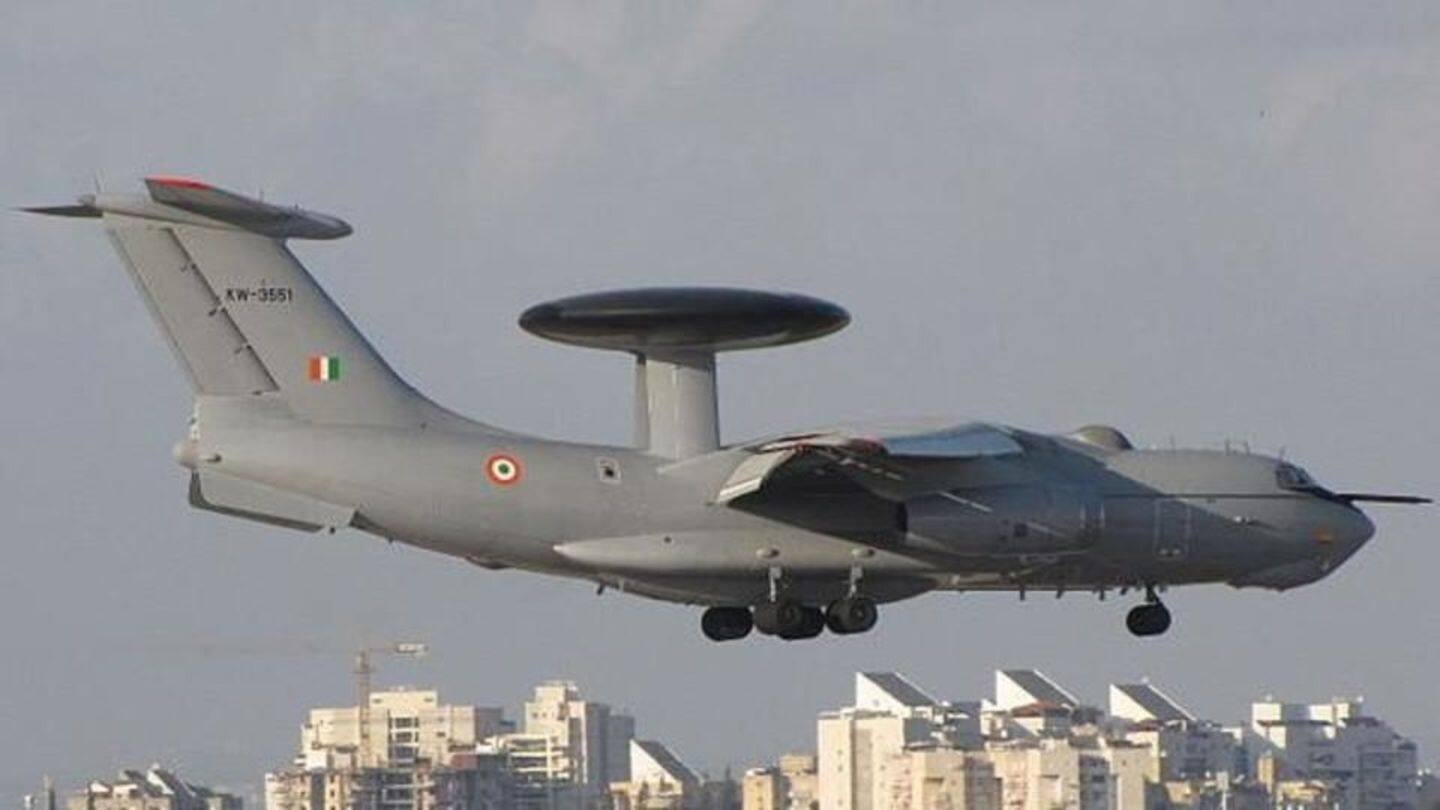
Indian Air Force hit by shortage of AWACS surveillance planes
What's the story
The Indian Air Force (IAF) is witnessing a serious cataract in its "eyes in the sky" arising from a severe shortage of airborne warning and control systems (AWACS).
The IAF has just three AWACS while China has around 20.
India's efforts to induct more have been stalled by painfully slow indigenous development and a deadlocked deal with Russia and Israel.
Do you know?
What are AWACS?
AWACS systems are critical force-multipliers in modern-day combat. They are capable of detecting incoming fighter jets, drones and cruise missiles before ground-based radars can. AWACS also direct friendly warplanes against enemy jets during combat operations.
Deadlock
Deal to buy Israeli-Russian AWACS system facing deadlock
The IAF inducted three Israeli-made Phalcon AWACS mounted on Russian IL-76 aircraft from 2009-11 as part of a $1.1 billion deal.
A "follow-on" order for two more aircraft remains stuck after Russia increased the price for the IL-76 sharply.
India is ready to pay $800 million for the two AWACS, not $1.3 billion being demanded by the weapon system's manufacturers.
Netra
Indigenous Netra system not as capable as Phalcon AWACS
The IAF inducted the first of three indigenous Netra airborne early-warning and control system (AEW&C) in February.
However, unlike the Phalcon which has a 360-degree coverage and 400km range, the Netra has 240-degree coverage and a 250km range.
The Netra platform comprises of a smaller Brazilian Embraer-145 jet, whose purchase has been marred by an alleged kickbacks scandal.
Delayed development
Development of advanced indigenous AWACS could take years
India is developing its own AWACS under a Rs. 5,113 crore program, which would see 360-degree AESA radars being mounted on Airbus A-330 aircraft.
However, it's expected to take at least 80 months to operationalize the first two of six AWACS once the contract for the Airbus planes is inked.
At the earliest, the first two AWACS would only be ready by 2024-25.